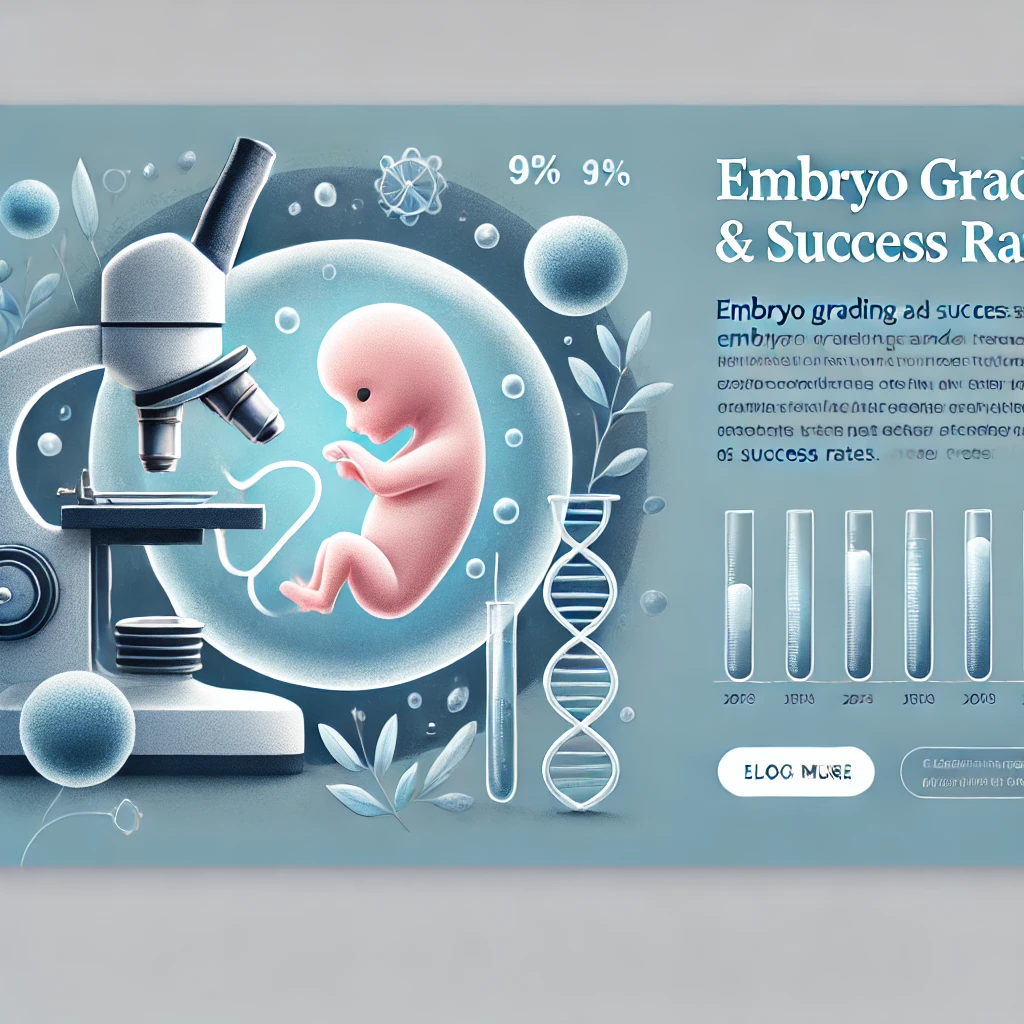Embryo grading is a key factor in figuring out how successful fertility treatments like in-vitro fertilization (IVF) can be.
By understanding the grading system and the success rates associated with different embryo types, individuals can make better-informed choices. This guide explores the details of embryo grading. It examines the success rates. Various factors that can affect implantation and pregnancy outcomes are also discussed.
What is Embryo Grading?
Embryo grading is a method used by embryologists to evaluate the quality of embryos before they are implanted. The criteria for grading usually include:
- Blastocyst Expansion: This measures how well the embryo is developing.
- Inner Cell Mass (ICM) Quality: This indicates the embryo’s potential for fetal development.
- Trophectoderm Quality: This assesses the cells that will form the placenta.
Embryos are typically categorized into grades. Examples include Grade 1, Grade 2, and Grade B. Each grade has its own likelihood of successful implantation.
Success Rates by Embryo Type
Different grades and types of embryos can lead to varying success rates in IVF treatments.
Fresh vs. Frozen Embryo Transfer Success Rates
- Fresh Embryo Transfer Success Rate: Generally falls between 40-50% per cycle.
- Frozen Embryo Transfer Success Rate: This can vary but may reach 50-60%, depending on the quality of the embryo.
- Embryo Freezing Success Rate: About 90-95% of embryos survive the freezing and thawing process.
Grading and Success Rates by Embryo Quality
- 4AA Embryo Success Rate: These have a high implantation potential, with success rates around 50-60%.
- 5AA Embryo Success Rate: Known for being among the best quality embryos, they can lead to success rates of 60-70%.
- 4AB Embryo Success Rate: A bit lower than 4AA but still impressive, around 50%.
- 3AA Embryo Success Rate: These have moderate chances of implantation, estimated at about 40-50%.
- 3AB, 2AA, and 2AB Embryo Success Rates: Typically fall between 30-45%.
- Grade B Embryo Success Rates: While slightly lower than top-quality embryos, they still have viable success rates of 30-40%.
Single vs. Multiple Embryo Transfer Success Rates
- Single Embryo Transfer Success Rate: This approach reduces the risk of multiple pregnancies but may lower
- 2 Embryo Transfer Success Rate: Increases chances to 50-60%, but also raises the risk of twins.
- 3 Embryo Transfer Success Rates: Higher probability of pregnancy but can result in complications due to multiple births.
Day 3 vs. Day 5 Embryo Transfer Success Rates
For Day 3 embryo transfers, success rates are generally lower.
They hover around 30-40%. This is mainly because the embryos are still in their early stages of development.
On the flip side, Day 5 frozen embryo transfers show a more promising success rate, reaching between 50-60%. This improvement is largely due to better embryo selection at this later stage.
For Day 3 transfers, the success rate is estimated to be around 30-35%.
Donor Embryo Success Rates
When we talk about donor embryos, the success rates are typically quite favorable, ranging from 50-70%. This is because donor embryos usually come from young, fertile donors.
Factors Influencing Embryo Transfer Success
A variety of factors can affect the overall success rate of embryo transfers, including:
- Maternal Age: As women age, particularly after 35, success rates tend to decline.
- Endometrial Receptivity: A healthy uterine lining can significantly boost the chances of implantation.
- Embryo Quality: The better the quality of the embryos, the higher the likelihood of a successful outcome.
- IVF Protocol and Lab Conditions: Utilizing advanced techniques can enhance survival rates.
- Overall Health and Lifestyle: Factors like smoking, obesity, and stress can negatively impact success rates.
Conclusion
Understanding embryo grading is crucial as it offers valuable insights into the probabilities of IVF success. High-quality embryos certainly improve the odds. However, many factors come into play. These include the health of the mother and the expertise of the clinic. By grasping the nuances of embryo grading and success rates, patients can make more informed decisions on their fertility journey.

